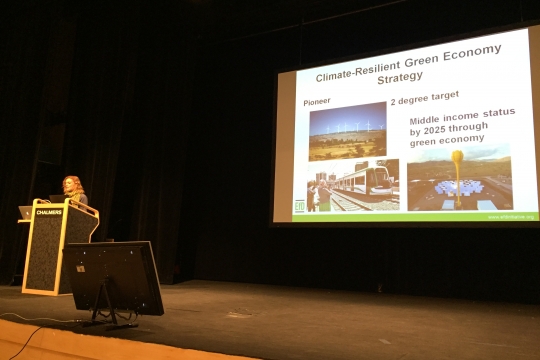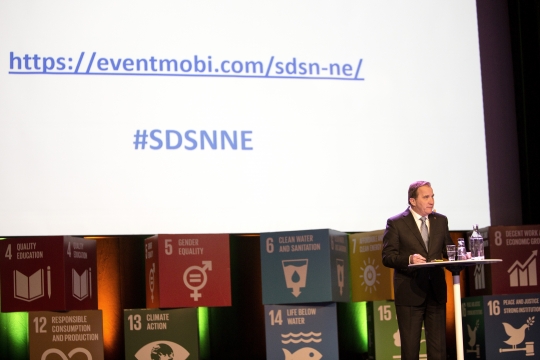EfD was presented as a solution model for working towards the UN 17 Sustainable Development Goals when the SDSN Northern Europe was launched on February 25-26. Particularly the Ethiopian EfD center, ECRC was highlighted as an example.
“EfD share the aim of SDSN, to help bridge the division between research and policy in order to reach sustainable development. There is a lot of excellent research being carried out, but we believe that society could make much better use of this research”, said EfD program manager, Susanna Olai during her presentation on February 25th. “Ethiopia sees climate change as a necessary driver in switching to a new sustainable development model. But also as an opportunity! The country is a pioneer in this area and one of few countries in the world to have a plan that aligns with the below 2 degrees target from the Paris Agreement”
International agreements on emission taxes a must
Thomas Sterner, Professor of Environmental Economics, spoke on the SDSN high-level launch on February 26th, about how to create a low-carbon economy. “It may seem like a distant paradise where all environmental problems are solved. But in fact, we will get nowhere without international agreements on tax on emissions.” Sterner was concerned, among other things, about the low price of oil which can lead to reduced investment in alternative energy sources. “The less valuable energy is, the more difficult it is to adjust to something new. ”The solution to the problem? Taxes that provides a minimum price on carbon emissions. Other countries should learn from Sweden, which has a carbon tax of $ 125 per tonne. “When I talk about this in the United States, they do not think that it is true. However, not only does it work, people even like the tax.”
We can reach the climate goals
Swedish Prime Minister Stefan Löfven pointed out that at the turn of the millennium, not many people thought we would be able to reach the climate goals, but today we know better. “2015 was the best and worst year in the history of mankind. However, it is very difficult to understand two so very different perspectives. The good news is that fewer people are living in extreme poverty and more and more children receive education. Meanwhile, the world was chocked by wars, terror attacks, refugee flows and increased inequality. 2015 was the warmest year so far.”
The past does not determine the future
Prime Minister Löfven said that there are two reasons for Sweden to take the lead when it comes to sustainability goals. The first is simply because it's the right thing to do. “I myself have grown up as a foster child in a loving family and know from personal experience that it is not necessary to let the past determine the future.” The second reason is that sustainability is economically smart. “There is evidence that egalitarian societies have better economic development.”
Facts about SDSN NE
The university-run network, the Sustainable Development Solutions Network (SDSN) was launched in 2012 by the UN Secretary General. Centre for Environment and Sustainability (GMV) at the University of Gothenburg and Chalmers has been appointed the node for the regional network SDSN Northern Europe, where 39 universities are included. The idea is to bring together stakeholders from politics, business and academia to work practically around the UN's 17 Sustainable Development Goals.
To launch the cooperation, GMV arranged a conference on February 25-26, 2016, where Swedish Prime Minister Stefan Löfven and Minister of International Development Cooperation, Isabella Lövin participated, besides representatives of academia and industry.
For more information: http://unsdsn-ne.se/
Based on a news article by Eva Lundgren and Allan Eriksson first published at www.gu.se
Photos: Johan Wingborg and Karin Jonson
Translated and modified by Karin Jonson


